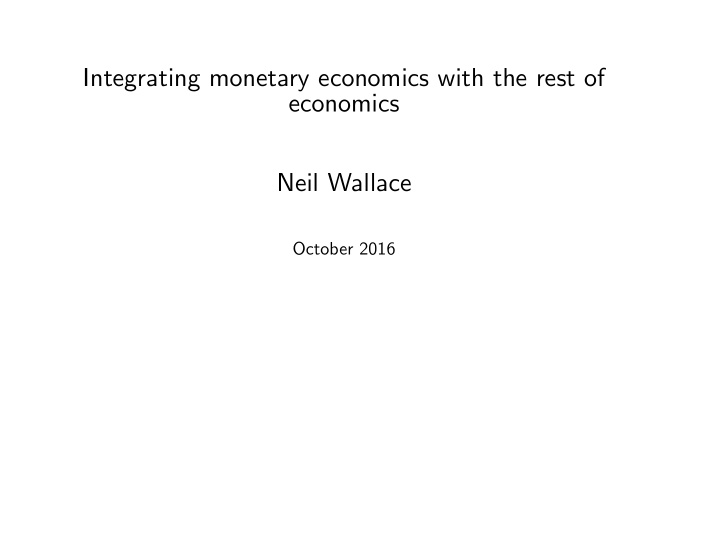



Integrating monetary economics with the rest of economics Neil Wallace October 2016
Double-concidence problems “Since occasions where two persons can just satisfy each other’s desires are rarely met, a material was chosen to serve as a general medium of exchange.” (Paulus, a 2nd century Roman jurist) • what was Paulus trying to do? • how do we interpret “two persons” • who are they
The discrete-time setting of Zhu-Wallace 2007 Stage 1: portfolio choice for people (who have money) • the government offers one-period discount bonds at a given price (in the general equilibrium, interest is financed by money creation) Stage 2: people meet pairwise at random; know nothing about each other’s histories; see each other’s portfolio • one person is a producer with disutility of production c ( y ) • the other is a consumer with utility of consumption u ( y ) • the continuation value of money is strictly increasing and concave
A producer-consumer game (Zhu 2008) Game is played relative to a (planner) suggested trade (depends on port- folios) • each says yes or no (about proceeding to the next step) • the consumer makes a trade proposal • the producer says yes or no ; if yes , then the trade is the consumer’s trade proposal; if no , then the planner’s suggested trade is carried out Result: if the planner’s suggested trade is IR and in the pairwise core, then it is the unique equilibrium outcome of this game Coexistence: the planner’s pairwise-core trade makes the gains from trade for the consumer increasing in the consumer’s money holding
Comments Role of pairwise trade General theory of imperfect substitutabilty among assets Multiplicity (what are the favored assets?) Welfare • helps deal with capital over-accumulation (see Hu-Rocheteau 2013) • improves welfare in settings in which lump-sum money creation is ben- eficial (on-going work) Unexplored: what if people in a meeting can hide assets?
Recommend
More recommend